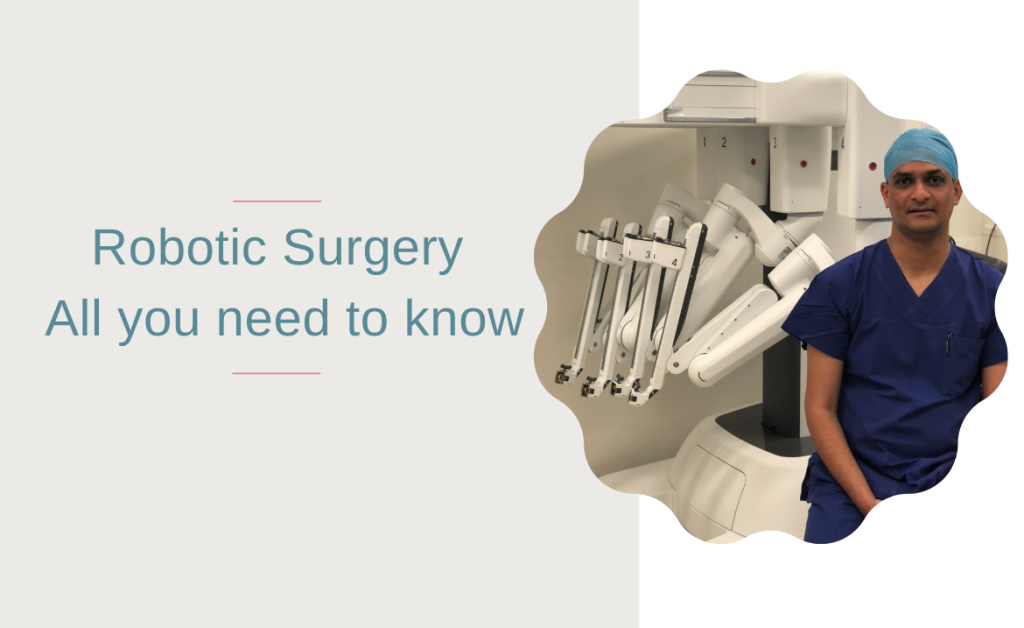Dr Kothari is widely recognised as the first and leading gynaecologist in Illawarra and Shoalhaven to be trained and accredited in Da Vinci Robotics and to perform the highest number of successful robotic procedures.
So, you may be wondering what is robotic surgery and when is it performed? Well, let’s take a look.
What is robotic surgery?
First and foremost, robotic surgery, also known as robot-assisted surgery, is when a surgical procedure is carried out using robotic technology. Hence the term robotic surgery.
Robotic technology is used to perform specific aspects of a minimally invasive surgical procedure that require a high level of precision and accuracy. And contrary to common misconception, the robot does not carry out the procedure. The doctor uses it merely as an instrument and the system translates the doctor’s hand movements at the console in real time bending and rotating the instruments while performing the procedure.
The Davinci system that we use at Wollongong Obstetrics and Gynaecology also provides us with highly magnified, 3D high-definition views.
Robotic surgery: what to expect.
During a robot-assisted surgery, the doctor does not stand over you as they would during traditional surgery, they instead direct the surgery from the robot situated nearby.
While every surgery is different, the general steps involve the following:
- The doctor will make a tiny incision in your body.
- He then inserts a miniature robotic instrument and a camera into your body.
- Sitting at the nearby console, your doctor then directs the procedure by manipulating the controls.
- The robotic instrument then responds to these movements and precisely translates them into real-time movements in your body.
The benefits of robotic surgery
Along with the use of sophisticated computers and software, this state-of-the-art technology provides extremely high levels of precision and accuracy leading to better outcomes compared to normal surgery. Such benefits include:
- Small incisions during surgery.
- Less risk of infections due to the smaller incisions.
- Faster and more comfortable recovery.
- Less pain.
- Quicker return to a daily routine.
Procedures that require robotic surgery
While Robotic surgery can be used for many different procedures (including cardiac, colorectal, urology, general and head and neck), in gynaecology it is used to treat the following:
- Hysterectomy (removal of the uterus)
- Oophorectomy (removal of the ovaries/cysts)
- Myomectomy (fibroid treatment)
- Endometriosis treatment
- Removal of adhesions (scar tissue) or cysts
- Treatment for ectopic pregnancy
Is robotic surgery right for me?
Whether or not your doctor will suggest robotic surgery to treat your gynaecological condition will depend on several factors, such as the type of procedure you are having, your overall health and whether this technique offers the best approach for you.
If this has been recommended as a treatment option for you, before surgery, Dr Kothari will take the time to provide you with detailed information on what to expect and answer any questions you may have.
Next steps
Before moving ahead with treatment, Dr Kothari will thoroughly advise you on the side effects and advantages and disadvantages of the treatment and answer any questions you may have. Whatever your decision, Dr Kothari and his team will support you every step of the way.
Give our team a call on 02 4225 1999, if you have any questions or to book an appointment.
Call: 02 4225 1999
Email: admin@wollongongObGy.com.au

